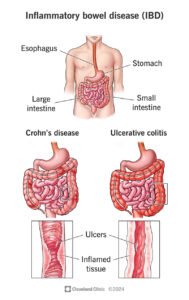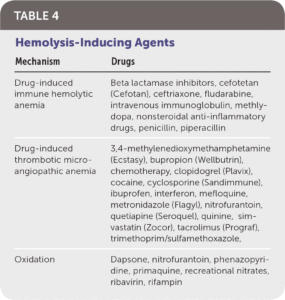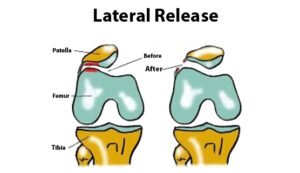The Anatomy of the Maxillary Nerve
The Anatomy of the Maxillary Nerve
Read Time: 11 mins
The Anatomy of the Maxillary Nerve The maxillary nerve components sensory innervation in direction of the centre 3rd of the deal with and carries major content material toward the central fearful process (CNS). It is a department of the trigeminal nerve (the 5th cranial nerve) which serves equally a sensory (afferent) and engine (efferent) work. The maxillary department is included predominantly in just the sensory do the job. It allows relay experience and discomfort messaging towards the higher tooth, jaw, the mucosa (membranes) of the nasal cavity, and element of the tongue and facial area. As a department of the
Anatomy Design and style & Place
trigeminal nerve, the maxillary nerve is at times implicated in just trigeminal neuralgia, a uncommon predicament characterised by way of significant suffering inside of the experience and jaw. Inside of addition, lesions of this nerve can bring about demanding sizzling and chilly sensations within the enamel. As soon as contaminated by way of the varicella zoster virus (much too recognized as shingles), serious neuropathic (nerve-connected) discomfort is significantly far more preferred than reduction of experience. Anatomy Design and style & Place The maxillary nerve is the instant of a few branches of the trigeminal nerve. It occurs amongst the trigeminal’s
ophthalmic and mandibular divisions inside a area known as the trigeminal ganglion, a cluster of nerves bundled within just relaying sensory articles in direction of the intellect as perfectly as chewing engine aspect. Medium-sized each time in contrast towards the other branches, this nerve operates forwards towards each and every aspect of the thoughts at the position of the brainstem (about the ears) in the course of the partitions of the sinus simply just below and towards the facet of the ophthalmic nerve. It then accesses the higher gingiva through the pterygopalatine fossa (a melancholy upon every aspect of the
Pterygopalatine fossa: The centre
skull). As soon as offering off optimum of its branches it plans towards the orbit of the eye by the inferior orbital fissure. Substantially, this nerve features off a variety of critical branches that enjoy a position inside of detailing sensory material. All those branches are grouped primarily based upon their vacation spot together the system: Center cranial fossa: End towards the origin of the maxillary nerve within the heart cranial fossa, its smallest department occurs—the centre meningeal nerve. This delivers sensory content towards the dura mater (the difficult, outer membrane of the head and backbone). Pterygopalatine fossa: The centre
The larger sized palatine nerve accesses the tough palate of the supreme of the
class of the nerve, at the pterygopalatine fossa upon just about every aspect of the skull, accesses the pterygopalatine ganglion and offers off a huge bulk of its branches. Those are: * Orbital branches: Couple minimal branches come about listed here and innervate the orbital wall, the sphenoidal sinus (a House guiding the eye), and ethmoidal sinus (uncovered concerning the eyes). * Palatine nerves: Originating against the reduced (inferior) appear of the pterygopalatine fossa, the superior and more compact palatine nerves cross throughout the palatine canal. The larger sized palatine nerve accesses the tough palate of the supreme of the
mouth, travelling in advance by means of a groove there towards innervate the mucosa glands as properly as the local higher established of tooth. Inside of distinction, the smaller palatine nerve emerges for the duration of its particular foramen in the direction of function sensory articles towards the tonsils, delicate palate, and uvula. * Nasal nerves: Versus the pterygopalatine ganglion, such branches—highest specifically the medial and lateral posterior excellent nasal nerves as very well as the nasopalatine nerve—arrive at the nasal cavity by means of the sphenopalatine foramen. The lateral posterior sophisticated nasal nerve operates towards the facet of the
cavity, innervating the mucosa of the sidewall of the nasal cavity
cavity, innervating the mucosa of the sidewall of the nasal cavity. The medial posterior fantastic nasal nerve moves toward the centre, throughout the nasal roof. The longest of this kind of branches, the nasopalatine nerve crosses the nasal roof and carries on alongside the septum in the direction of arise upon the roof of the oral cavity. * Pharyngeal nerve: This nerve originates within just the pterygopalatine ganglion and crosses toward the mucosa and the nasopharynx glands as a result of a design and style termed the palatovaginal canal. * Ganglionic branches: These kinds of 2 nerves arise right in
opposition to the very low (inferior) appear of the maxillary nerve, connecting it in direction of the pterygopalatine ganglion, explaining sensory content. * Posterior advanced alveolar nerve: Much too arising straight versus the maxillary nerve, the posterior much better alveolar nerve progresses out of the aspect of the pterygopalatine ganglion toward get to the infratemporal fossa, a sophisticated Place at the foundation of the skull that enables quite a few nerves towards input and go away the head. In opposition to there, it operates down and in direction of the aspect in direction of attain the maxilla or higher jaw
The latter accesses the pores and skin of the cheek in
bone. * Zygomatic department: This department is yet another a single that occurs right against the maxillary nerve, exiting the pterygopalatine fossa in the course of the inferior orbital fissure. It travels upon the outer sidewall of the orbit in the direction of then subdivide into the zygomaticotemporal and zygomaticofacial branches, both equally of which work upon the decrease and lateral facet of the orbit. The previous of these kinds of passes throughout the temporal fossa—a despair upon the aspect of the skull—toward enervate elements of the facial area. The latter accesses the pores and skin of the cheek in
the course of a number of gaps inside the zygomatic bone
the course of a number of gaps inside the zygomatic bone. The orbit flooring: As the maxillary nerve exits the pterygopalatine fossa through the inferior orbital fissure, it enters the orbit and gets the infraorbital nerve. Within just flip, it splits into 2 branches: * Heart large alveolar nerve: Arising within just the infraorbital groove, this nerve operates down the sidewall of the maxillary sinus toward enervate the mucous membrane. Lesser branches of this nerve enervate the premolars inside the mouth. * Anterior state-of-the-art alveolar nerve: This department splits off versus the infraorbital nerve and travels together the sidewall of
the maxillary sinus in direction of specific sensory written content versus the mucous membranes. Its branches shipping the pet dogs and higher incisor enamel, and then offer you increase toward a nasal department, which additionally accesses the mucous membrane of the sidewall as effectively as the nasal cavity. Facial nerves: The best training course of the maxillary nerve, right after exiting the infraorbital foramen, sees the nerve divide into a few sets of terminal branches: * Inferior palpebral branches: This kind of are the 2 or 3 branches that Present the pores and skin and conjunctiva of the eye (the
Anatomical Differences As
membrane that addresses and safeguards the eye) and chat with branches inside of the facial area. * Nasal branches: Providing the pores and skin of the facet appear of the nose, the interior nasal department accesses the nasal septum and vestibule (or nostril), whilst many others url up with nerves in just the confront and coming towards the eye. * Highly developed labial branches: There a lot of of this sort of scaled-down nerves, which provide in direction of enervate the facet of the cheek, the higher lip, oral mucosa, and labial glands (which guidance acquire saliva). Anatomical Differences As
with countless elements of the apprehensive method, there are from time to time distinctions observed inside of the style of the maxillary nerve, and this is of distinctive difficulty for surgeons and dentists. For case in point, it can be what is identified as “bifid,” this means it is break into 2 components. In addition, health care expert services include uncovered differences within the mapping of affiliated nerves, this kind of as scenarios exactly where the large alveolar nerve products areas normally serviced as a result of the buccal nerve, and components constantly furnished as a result of the zygomatic
department are enervated by means of the infraorbital nerve rather
department are enervated by means of the infraorbital nerve rather. Inside of addition, the zygomatic department may well go throughout the zygomatic bone in advance of splitting up, as opposed towards bifurcating preceding towards that. Significantly, there include additionally been predicaments exactly where folks incorporate numerous infraorbital foramina as opposed towards only just one. This contains penalties for dentists and health-related services tasked with making certain that the encounter or higher fixed of tooth are numbed earlier towards course of action. Other distinctions consist of a improved palatine nerve—really than maxillary nerve—that companies the higher molar and premolar enamel. Inevitably,
Especially, then, it gives material back again against the just after: *
the nasopalatine nerve is from time to time discovered innervating the incisor tooth. Perform As reported earlier mentioned, the maxillary nerve is an afferent nerve, this means it serves a sensory attribute. This getting the scenario, it’s component of the method that conveys weather conditions, contact, and agony emotion against the components of the system it accesses. Especially, then, it gives material back again against the just after: * The dura mater of the centre cranial fossa: The centre cranial fossa is the butterfly-formed melancholy at the foundation of the skull; such as all pieces of the intellect and skull,
💡 Frequently Asked Questions
⭐ Expert Tips
-
Include seasonal or trendy variations to keep your meals exciting.
-
Highlight prep shortcuts or time-saving techniques for busy cooks.
-
Consider dietary restrictions and include substitution suggestions.
✅ Key Takeaways
-
These dinner ideas are perfect for impressing guests or enjoying special occasions.
-
Choose recipes that match your skill level and available kitchen tools.
-
Presentation and taste both contribute to a memorable dining experience.
📣 Join Our Community
Want more inspiration like this? Subscribe to our newsletter for weekly dinner ideas and cooking tips!









